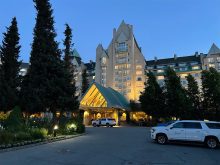I’ve never met Trevor McCrea but I know he has a lot of grit.
Last week, the Baldwinton, Sask., rancher helped load the family’s 245 purebred and Angus cross cattle into trucks that took them directly to slaughter and testing for signs of bovine spongiform encephalopathy.
It was necessary and vital work, but there’s no doubt it took an emotional toll.
So painful was the experience that Trevor’s parents, Mel and Betty, reportedly couldn’t bear to watch.
No wonder.
The family had more than 40 years invested into building a cattle herd, and it disappeared in a matter of hours; part of the trace-back relating to Canada’s case of BSE.
Read Also

Downturn in grain farm economics threatens to be long term
We might look back at this fall as the turning point in grain farm economics — the point where making money became really difficult.
Cattle producers across Canada can empathize with the loss experienced by the McCreas and by other families who have lost herds as the investigation proceeds. And it’s a loss beyond monetary.
Particularly in purebred operations, but to a degree in all cow-calf herds, the personalities of herd-mates become obvious to their owners and histories develop over the years.
It’s not unusual for a rancher to identify a cow from a distance just by her markings and her way of walking or standing. Tag numbers merely verify.
Similarly, cows seem able to identify, if not individual humans, certainly the size, shape and general colour scheme of people they’re used to seeing. I know of one herd, for example, that gets skittish in the presence of tall men wearing cowboy hats, but grazes calmly in the presence of short women wearing blue jeans.
Did the McCreas have one or two tamer cows, who would approach to have their necks scratched? Did they ever admire the aggressive mothering of a particular Angus dam with a new calf? Did they have a herd matriarch who took the lead when the herd moved from pasture to pasture? Or one that could spot an open gate from a half-mile away?
These are the sorts of things that put the enjoyment into cattle ranching. To those with true trail dust in their blood, cows are more than hayburners.
They’re walking-around, developing investments of time and sometimes trouble and often triumph. They help make a life and they help make a livelihood.
Those whose herds were sacrificed for the good of the national industry will get government compensation toward their losses.
But there are already losses that can’t be eased with money. Trevor and Mel and Betty McCrea can probably tell you that.

















